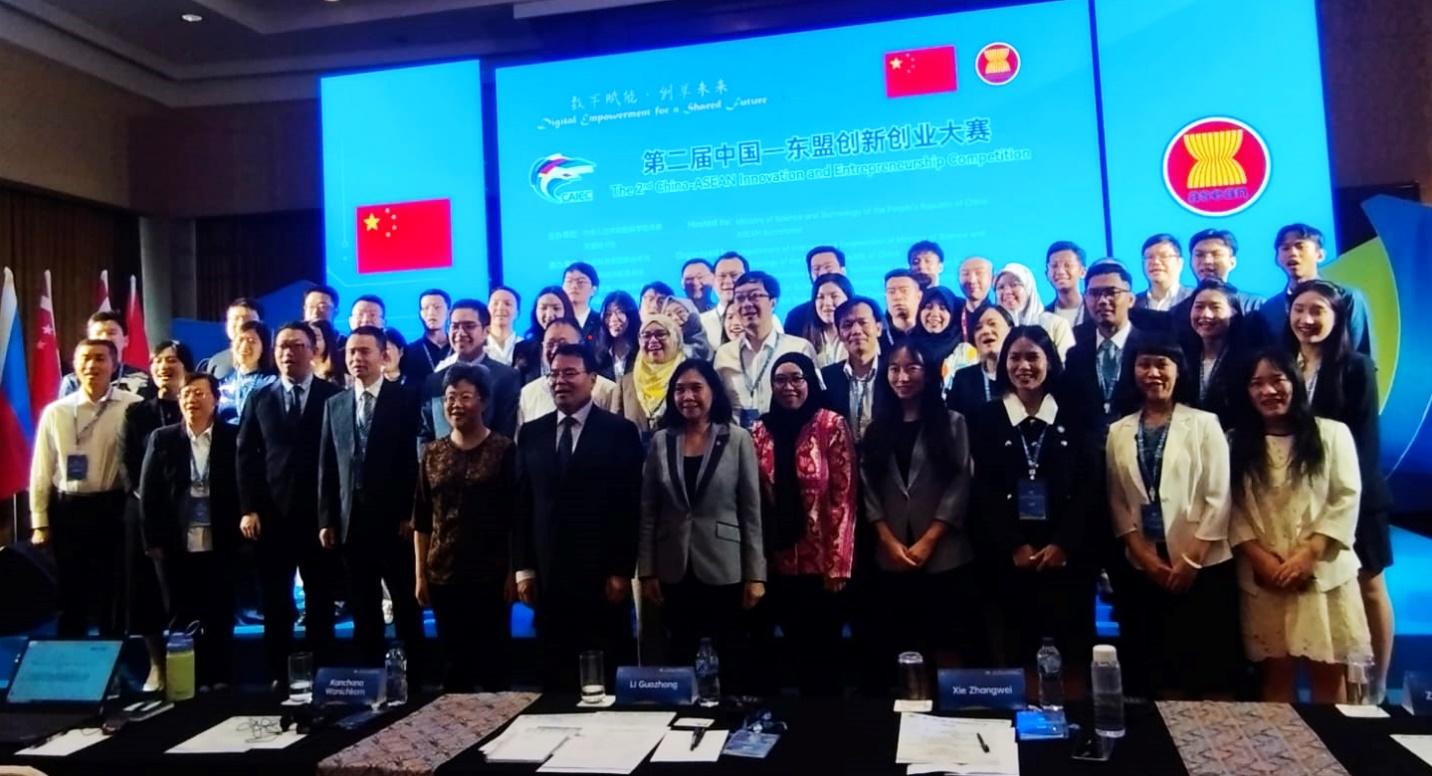
China and the Association of Southeast Asian Nations (ASEAN) are making inroads promoting regional exchange and cooperation on science and technology innovation, which is seen as an important driving force for global economic and social development.
The progress made so far was on show on May 15 at the final of the second China-ASEAN Innovation and Entrepreneurship Competition (CAIEC) in Indonesia’s capital Jakarta. The showpiece event at the JW Marriott Hotel Jakarta saw 19 finalists from China and ASEAN countries contest the enterprise group and team group categories.
The finalists developed and applied sci-tech innovation in different fields including agriculture, manufacturing, fisheries, transportation, education, medicine, healthcare, security, and environmental preservation.
ASEAN Sectoral Development Director Kanchana Wanichkorn and Director-General of China-ASEAN Technology Transfer Center (CATTC) Li Guozhong delivered speeches to open the final.
Ning Wu, a professor of Artificial Intelligence (AI) Science and Technology at Beibu Gulf University in Qinzhou, Guangxi region, said he was delighted to see young people from different countries come together at such an event
Wanichkorn lauded China for its support for increased connectivity and mutual understanding between China and ASEAN countries in different fields, including science and technology development.
ALSO READ: ASEAN delegation meets Myanmar leader
“I just want to highlight that China is ASEAN’s largest trading partner since 2020. China plays a very competitive role in our economic landscape, particularly in science, technology, and innovation,” she said.
Li, who is also director-general of Science and Technology Department of Guangxi Zhuang autonomous region, said tech innovation plays an important driving force for the global economy and social development.
He referred to President Xi Jinping’s proposal in January 2021 that China and ASEAN start science and technology innovation. Xi was speaking in the ASEAN-China Summit that marked the 30th Anniversary of China-ASEAN Dialogue Relations.
“This competition is not only a competitive feast of science and technology innovation but is also a platform for all countries to communicate and learn,” Li said.
Ning Wu, a professor of Artificial Intelligence (AI) Science and Technology at Beibu Gulf University in Qinzhou, Guangxi region, said he was delighted to see young people from different countries come together at such an event.
“This competition is kind of the way that we share the future. It is not the competition itself but is a matter of a shared future,” said the professor, who was also a judge at the competition.
He said he hopes that competitions will not only focus on how developed technologies can make money but also on how they could support the development of humanity and society.
Ning added that all of the finalists in the competition were very good.
ALSO READ: ASEAN urged to speed up green energy transition
APLUX, China’s provider of a unified technological pathway, won the top prize in the enterprise group category. Its groundbreaking AidLux operating system has integrated Android, Linux, and real-time operating systems without virtualization, enabling parallel operation.
APLUX’s Robot Tech Lead Yufan Hou said that taking part in CAIEC provides the company with an opportunity to enhance exchanges and cooperation with potential partners in overseas markets, particularly the ASEAN market.
“We are extremely grateful for the high evaluation and recognition given to us by the competition. This is not only a testament to our technological capabilities but also opens a door of opportunity for us to further expand our market presence in ASEAN,” he said.
Tra T. Truong from Capaloca, a pioneering platform in Vietnam that provides practical financial education for children, said China and ASEAN are their key targets in the next five years.
During his presentation before the judges Truong spoke about making teaching fun using technology and their discussions with families about child financial literacy.
“This competition has allowed us to connect with other innovative entrepreneurs, enriching our perspective and approach,” Truong said after Capaloca won third prize in the team group category.
Neak Sokkim, CEO of CHALATEX, a Cambodian startup that provides agricultural technology solutions to address farming challenges, said she sees a substantial potential market across the ASEAN region.
“While we have established a strong presence in Cambodia, our strategy is to scale out business to other ASEAN countries,” she said.
Sokkim said that they had secured some seed funding from the Cambodian government, as well as support from various incubators and accelerator programs.
Funding and marketing targets were among the questions asked by the CAIEC judges.
The event was co-organized by the Department of International Cooperation of the Ministry of Science and Technology of the People’s Republic of China; the ASEAN Committee on Science, Technology and Innovation; the Department of Science and Technology of Guangxi Zhuang autonomous region; and the China-ASEAN Technology Transfer Center (CATTC).
Leonardus Jegho is a freelance journalist for China Daily.


